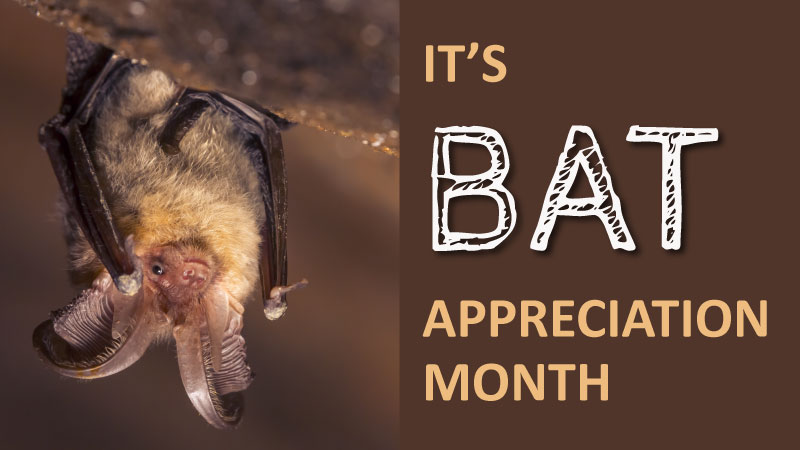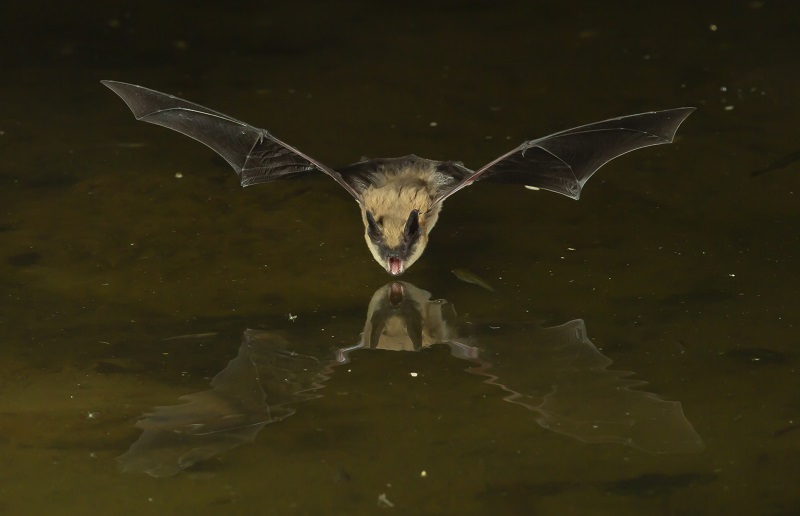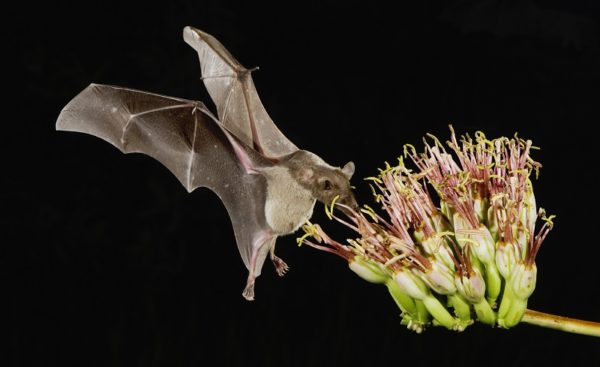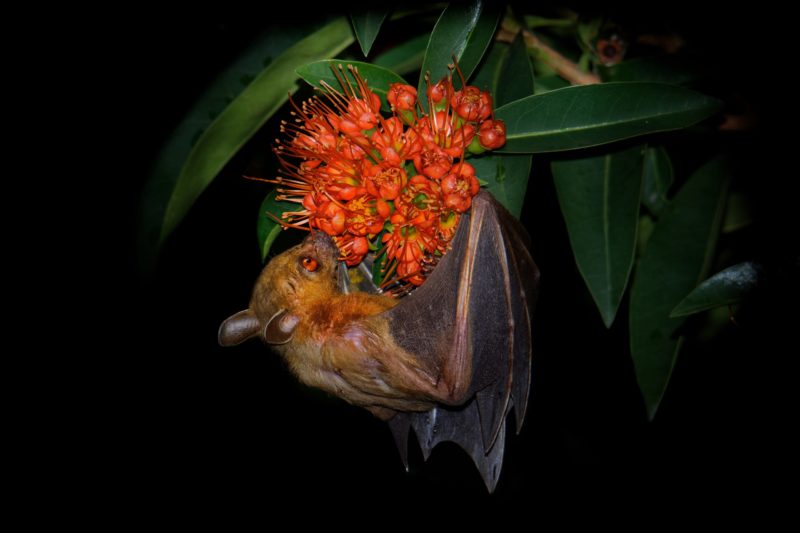October marks Bat Appreciation Month
Learn About Bats’ Vital Ecological Roles
BATS HELP CONTROL INSECTS
Bats are able to consume their body weight in insects each night, making them a great natural source for mosquito control!
BATS POLLINATE MANY PLANT SPECIES
Other bats eat fruit or nectar and therefore aid in pollination. Tropical fruit species including bananas, mangoes, and guavas depend upon bats as their pollinators, as does the agave and iconic saguaro cactus in the Sonoran Desert.
BATS DISPERSE SEEDS FAR AND WIDE
Tropical fruit-eating bats are vital in dispersing the seeds of the plants they eat across the tropical rainforest habitats in which they live.
Bats Face Many Challenges
More than 200 bat species in 60 countries around the world are considered threatened with extinction according to The International Union for the Conservation of Nature (IUCN).
Threats include many of the same ones facing other mammals; like habitat loss and pesticide exposure, competition and predation by non-native species, and climate change. They are also killed during the mining of guano in the caves they inhabit, killed by wind turbines, killed due to misguided myths, hunted for ‘bushmeat’ and traditional medicine, and from diseases like White-nose Syndrome.
Honduran White Bats Roosting in Leaf
The Honduran white bat (Ectophylla alba), is also called the Caribbean white tent-making bat. They are found not only in Honduras but also in Nicaragua, Costa Rica, and Panama. They are characterized by having distinctive, entirely snow-white fur, which is only found in six of the roughly 1,300 known species of bat.
Notice the yellow-orange coloration of its ears, nose, and lips. Recently, scientists discovered that the color originates from carotenoid pigments ingested from the bat’s primary food source – the fruits from a particular species of fig, Ficus colubrinae.
The bats roost during the day in small colonies on the undersides of leaves, particularly those of Heliconia, a type of bird-of-paradise plant. The bats modify these leaves by cutting the leaf’s central rib with its teeth, making it fold over into a v-shaped tent. This protects the bats from rain, sun, and predators, allowing them to rest peacefully.
I watched this group of roosting bats while hiking in a lowland rainforest tract near the east coast of Costa Rica.





